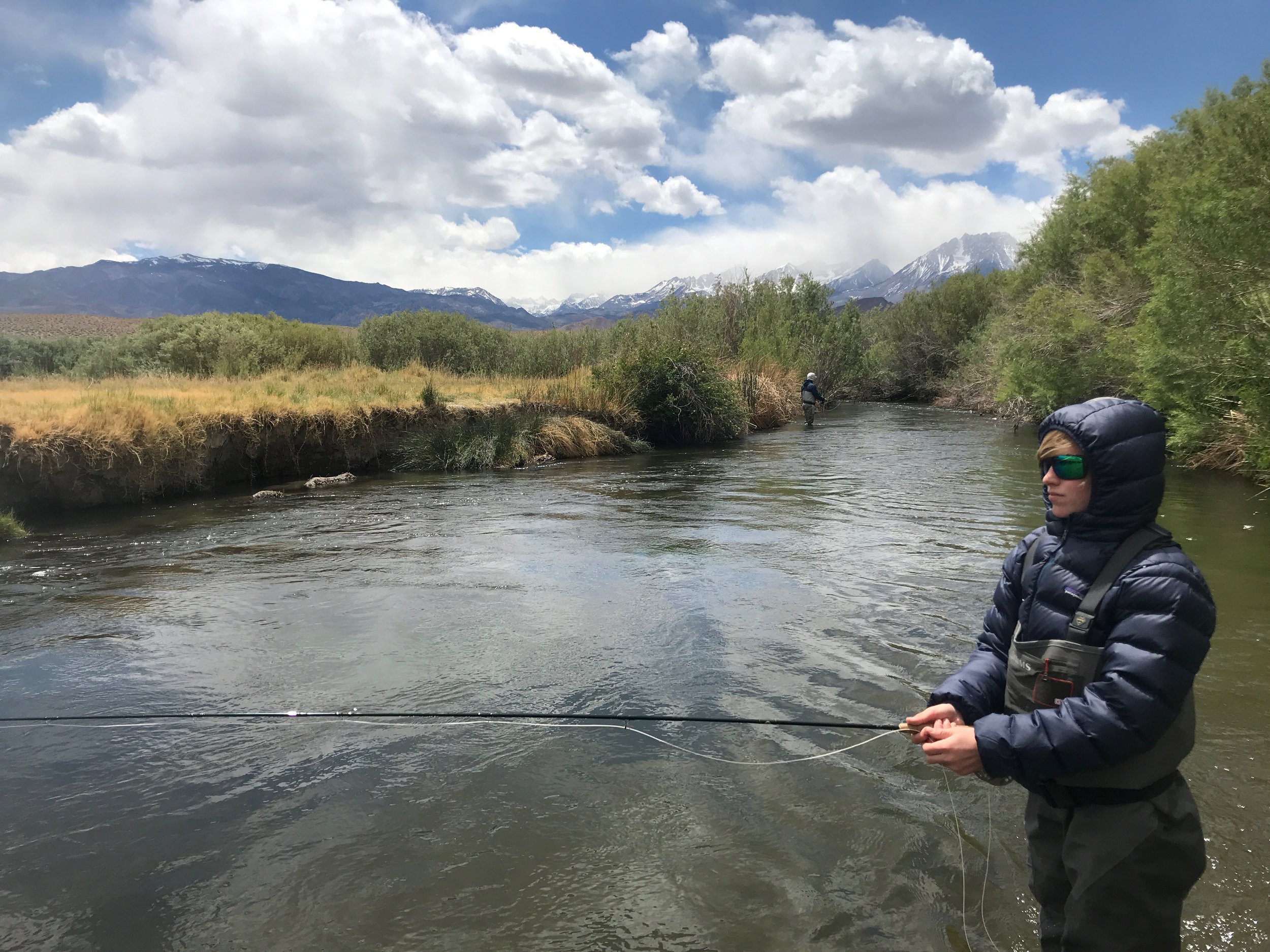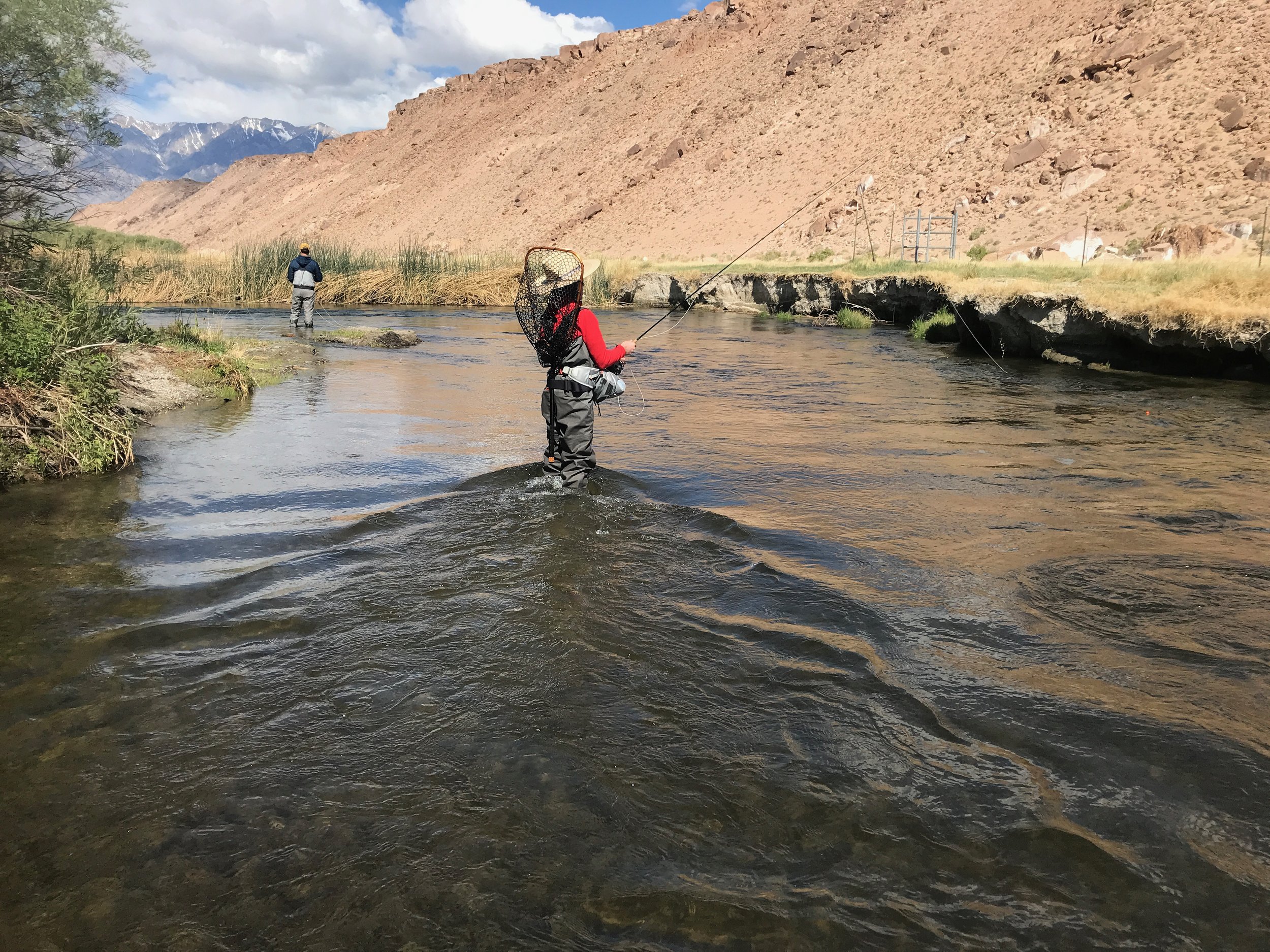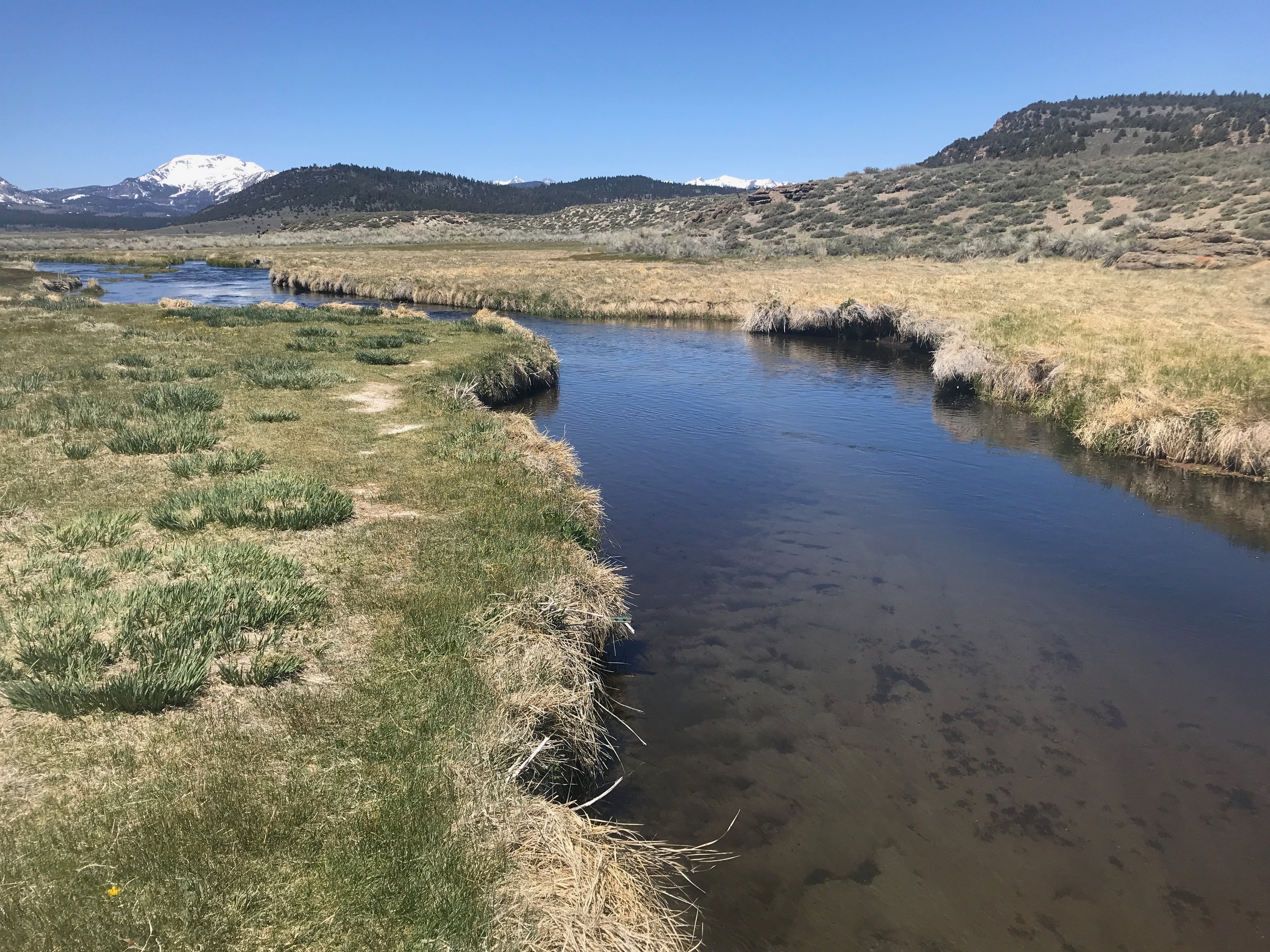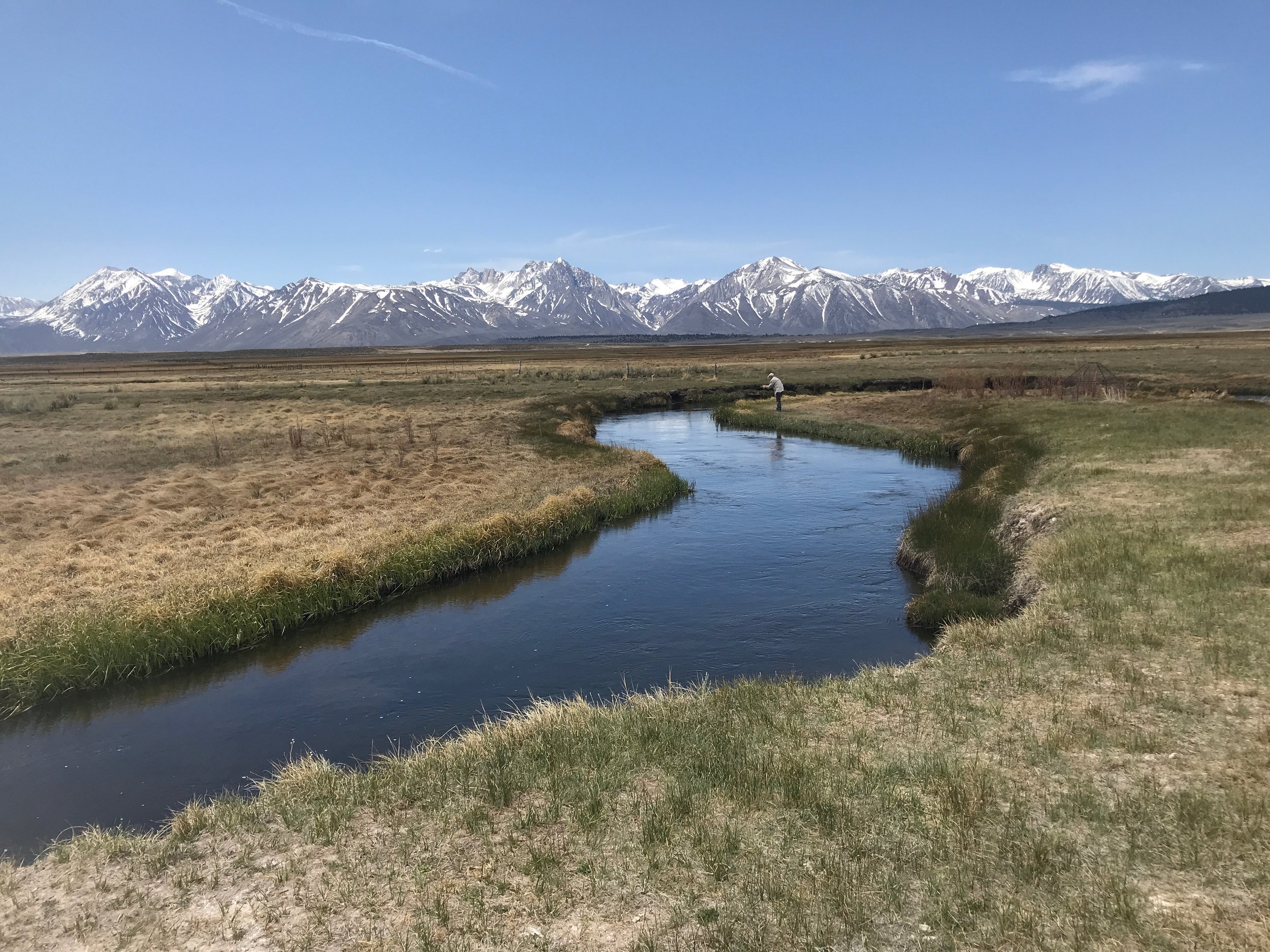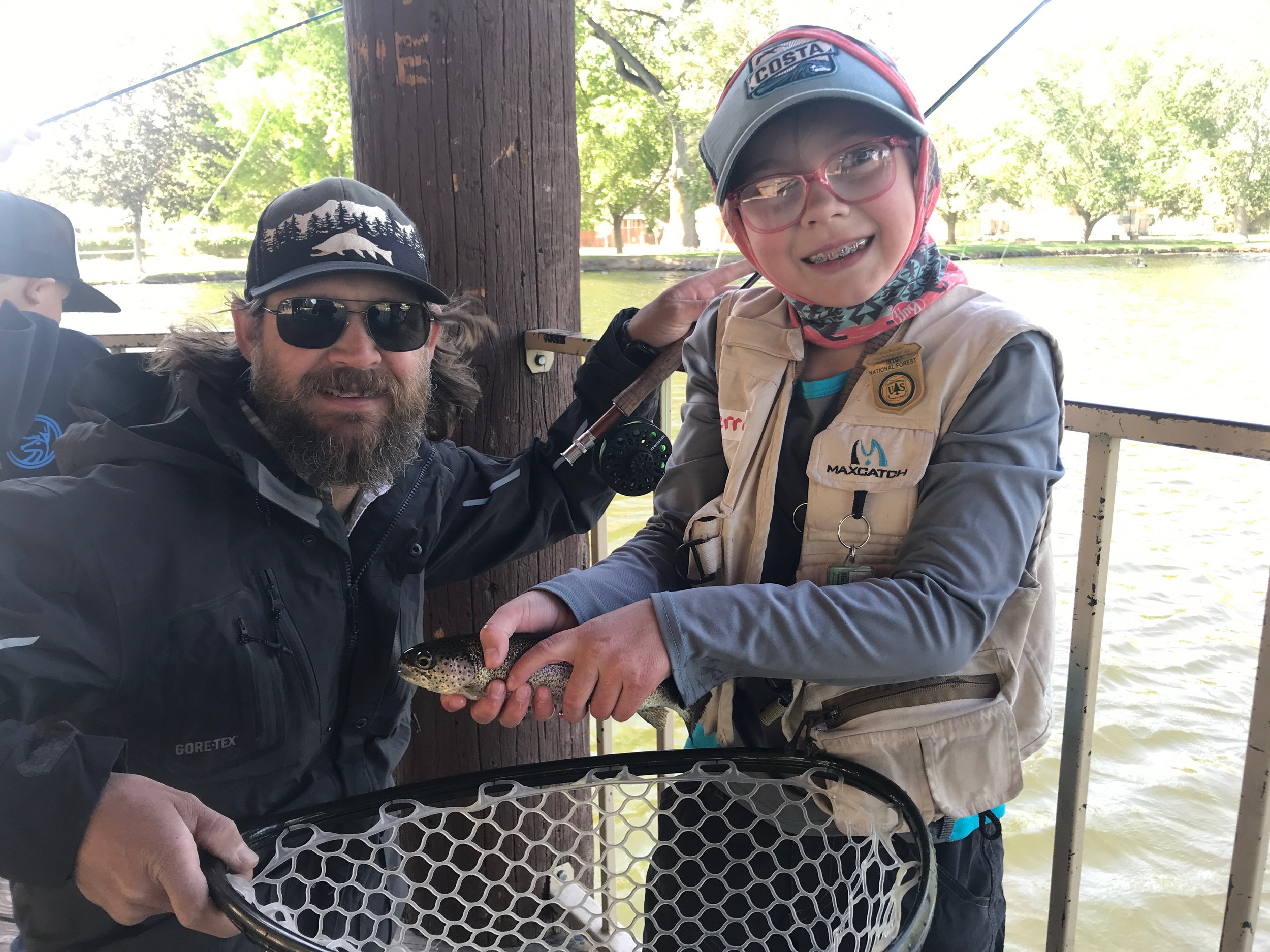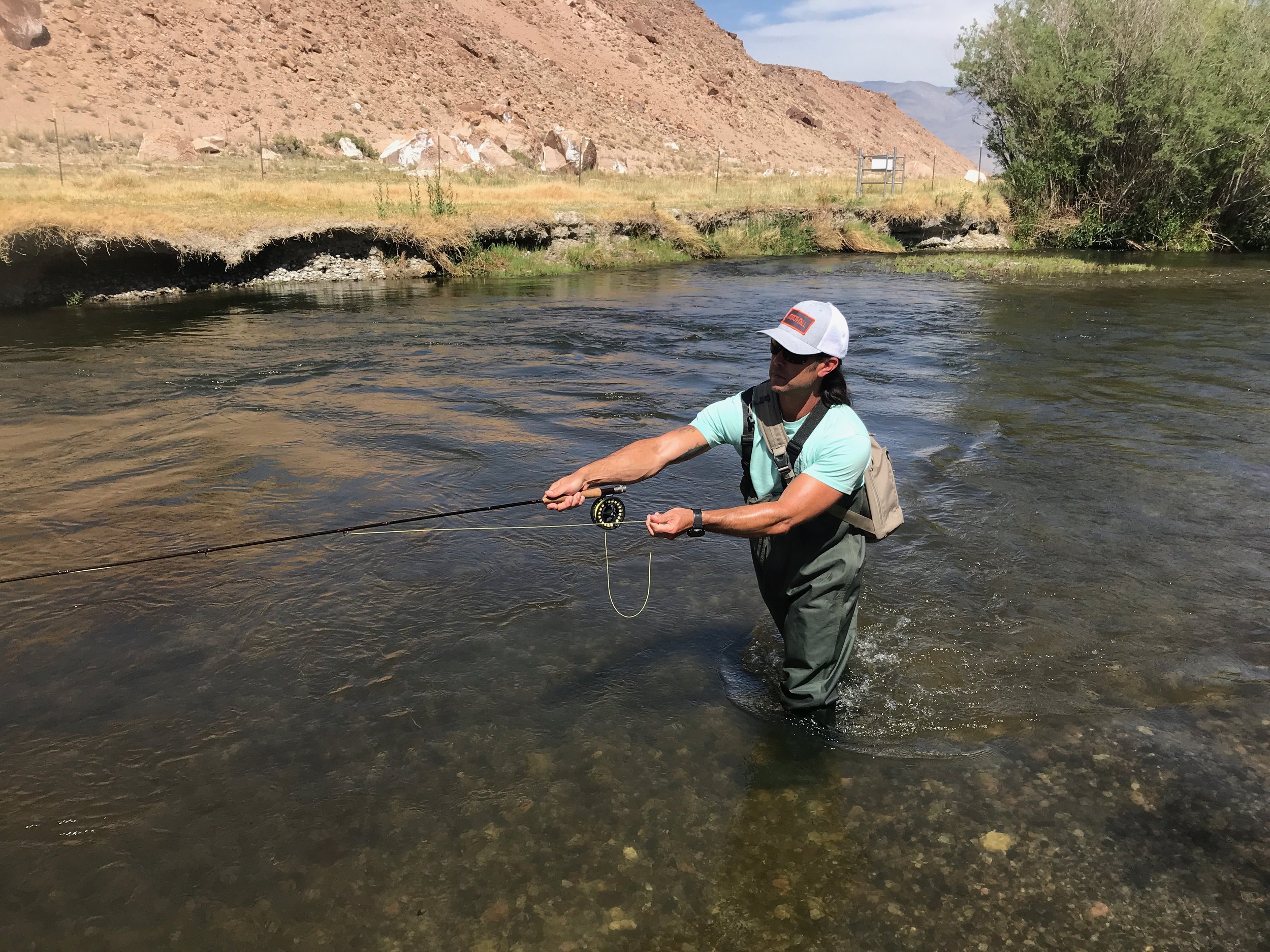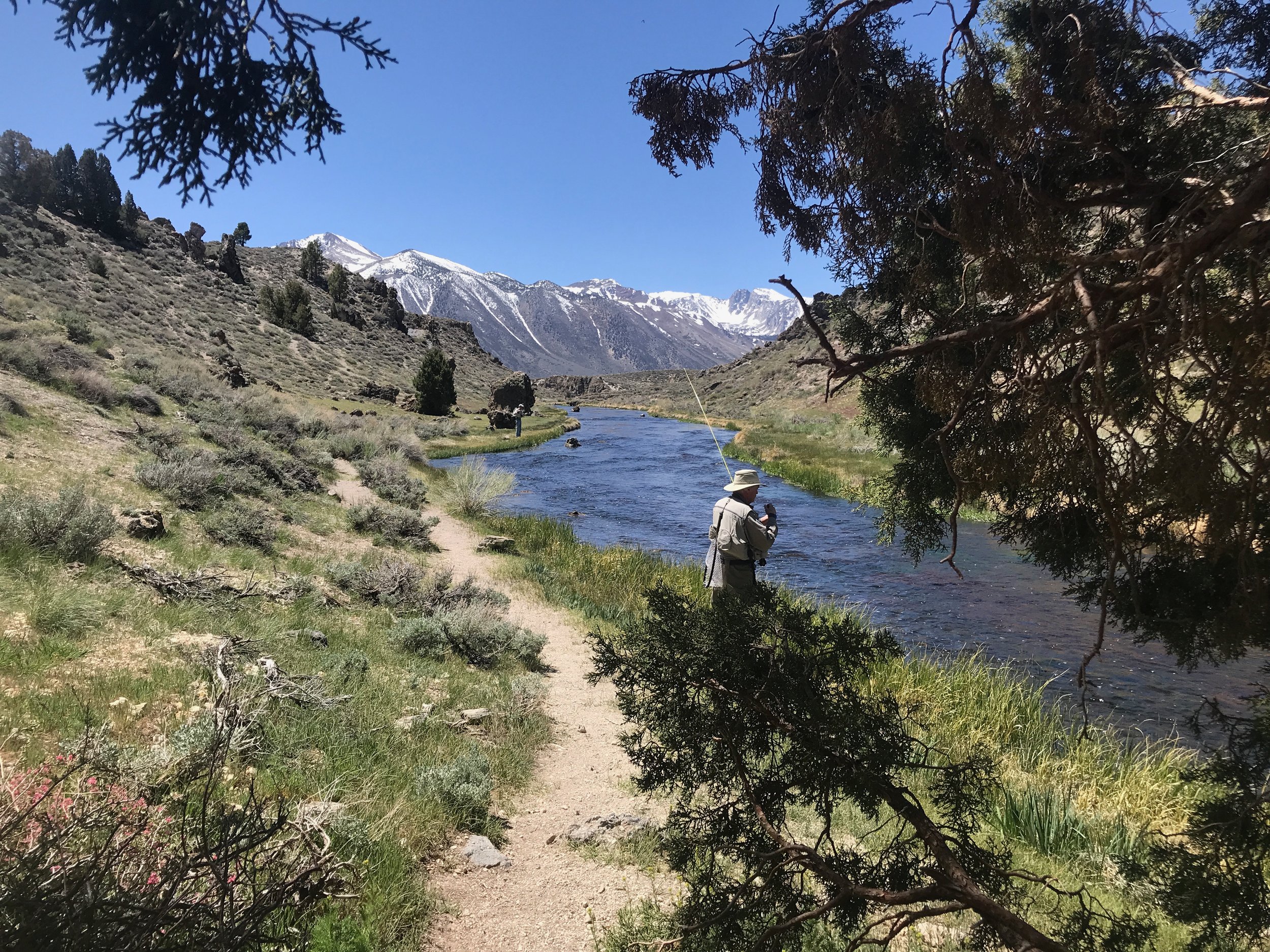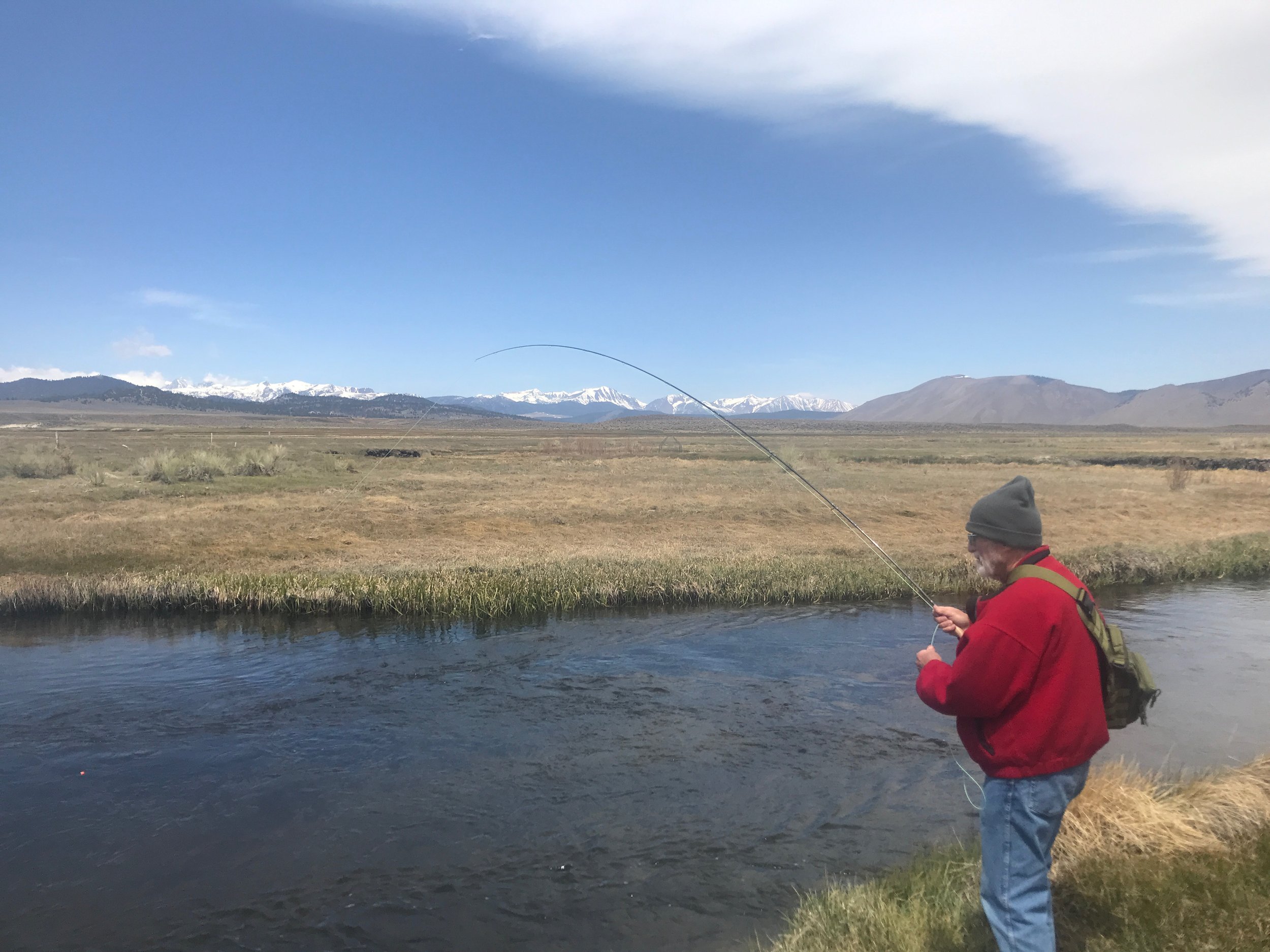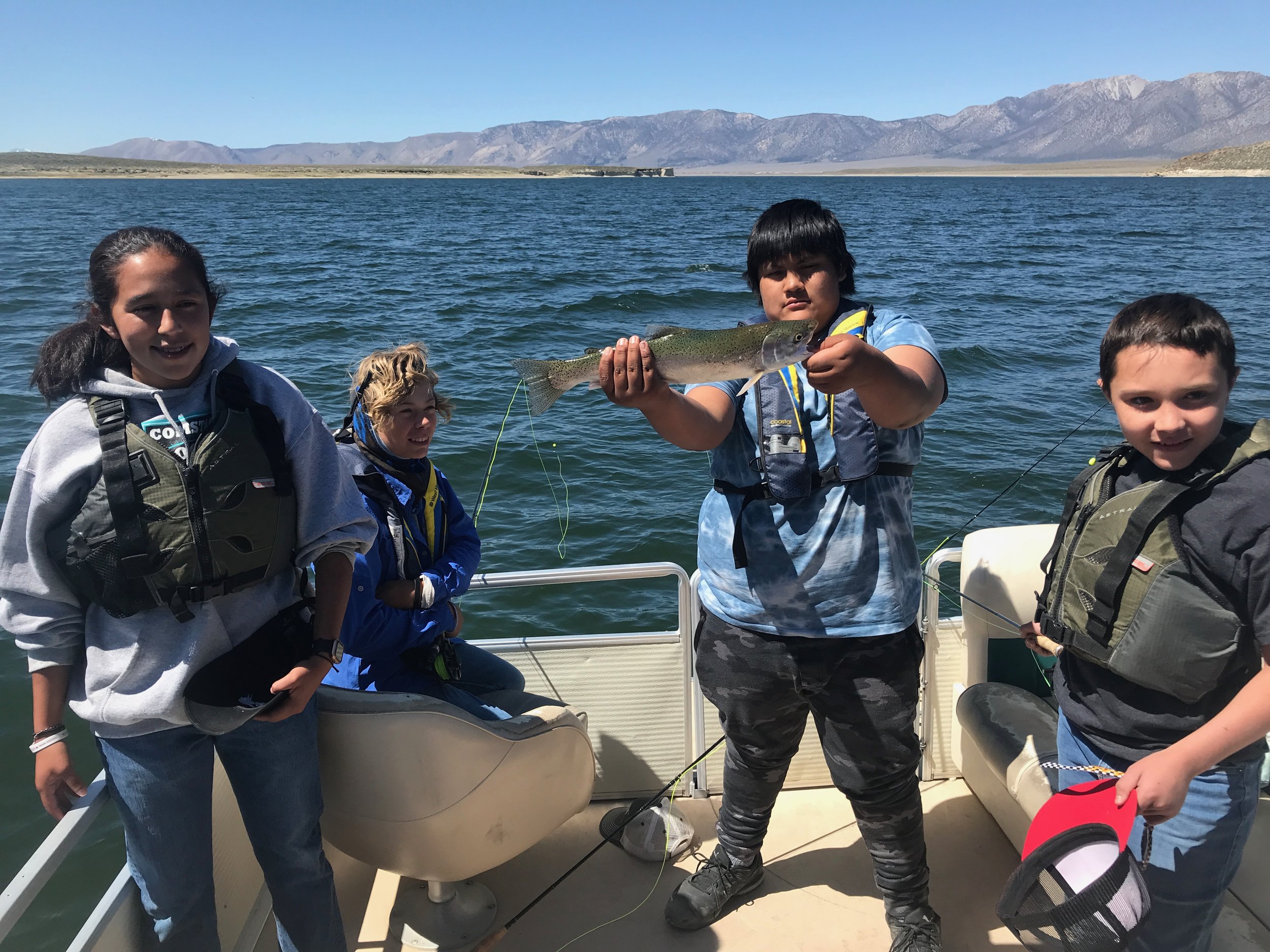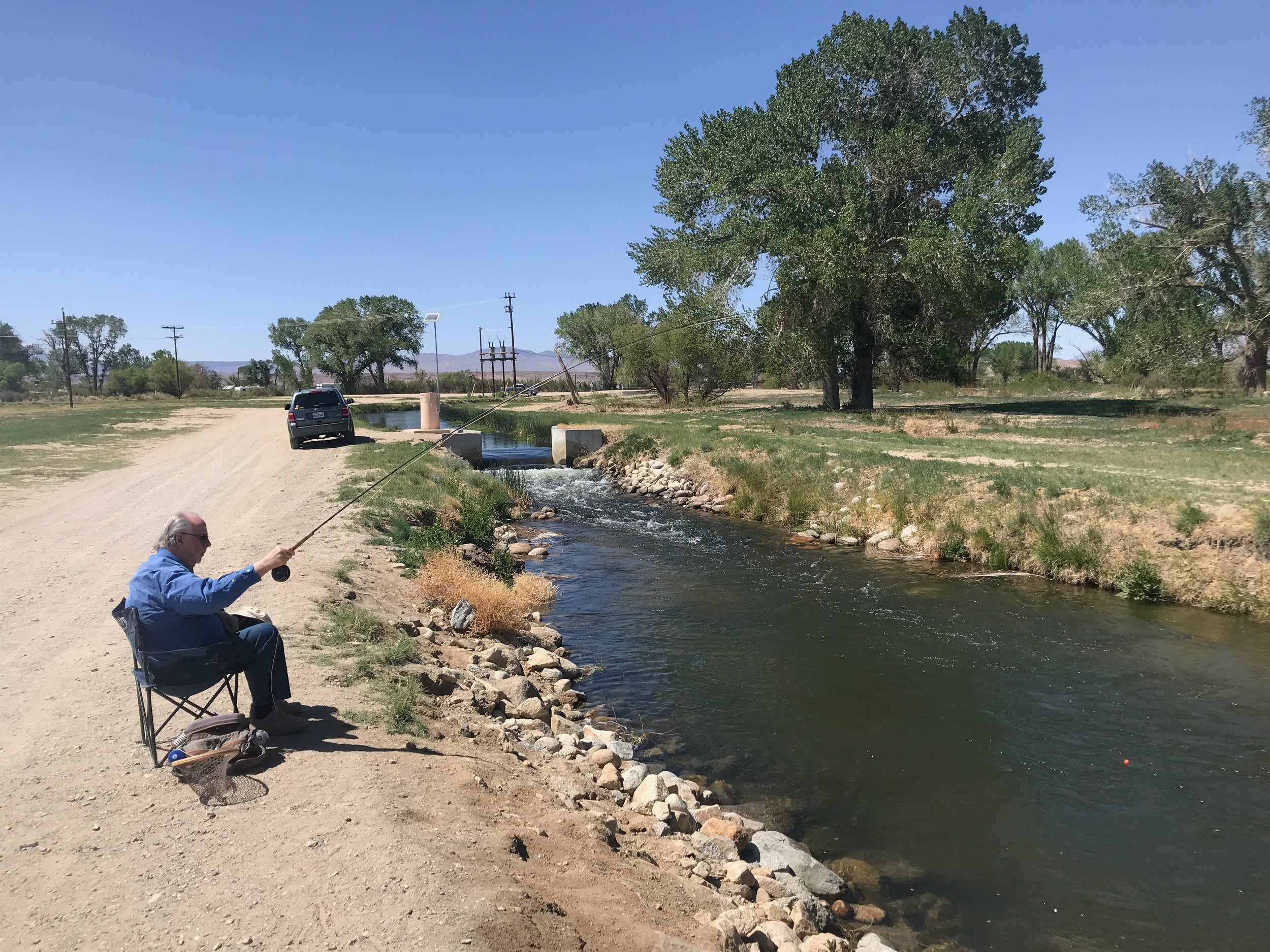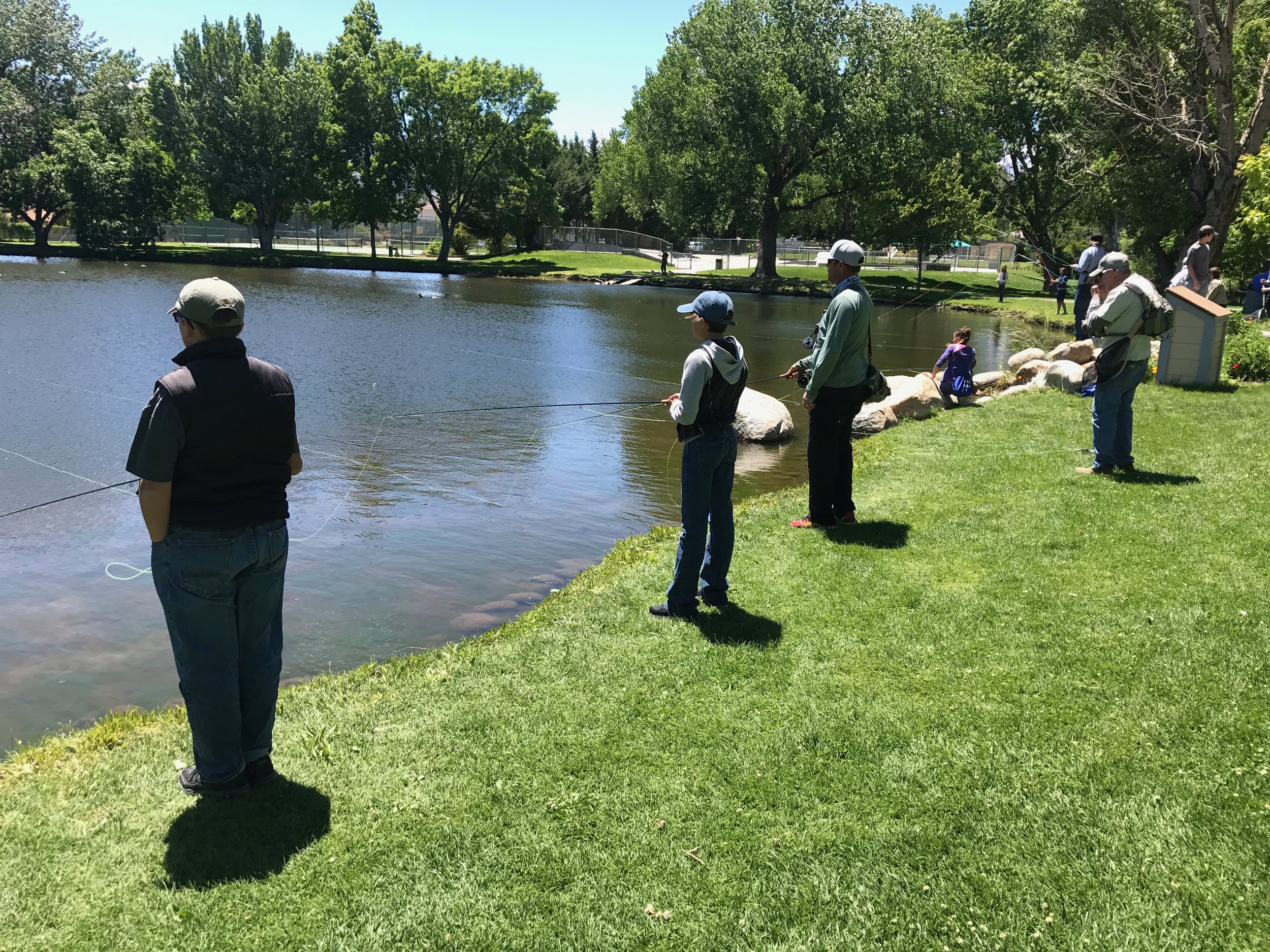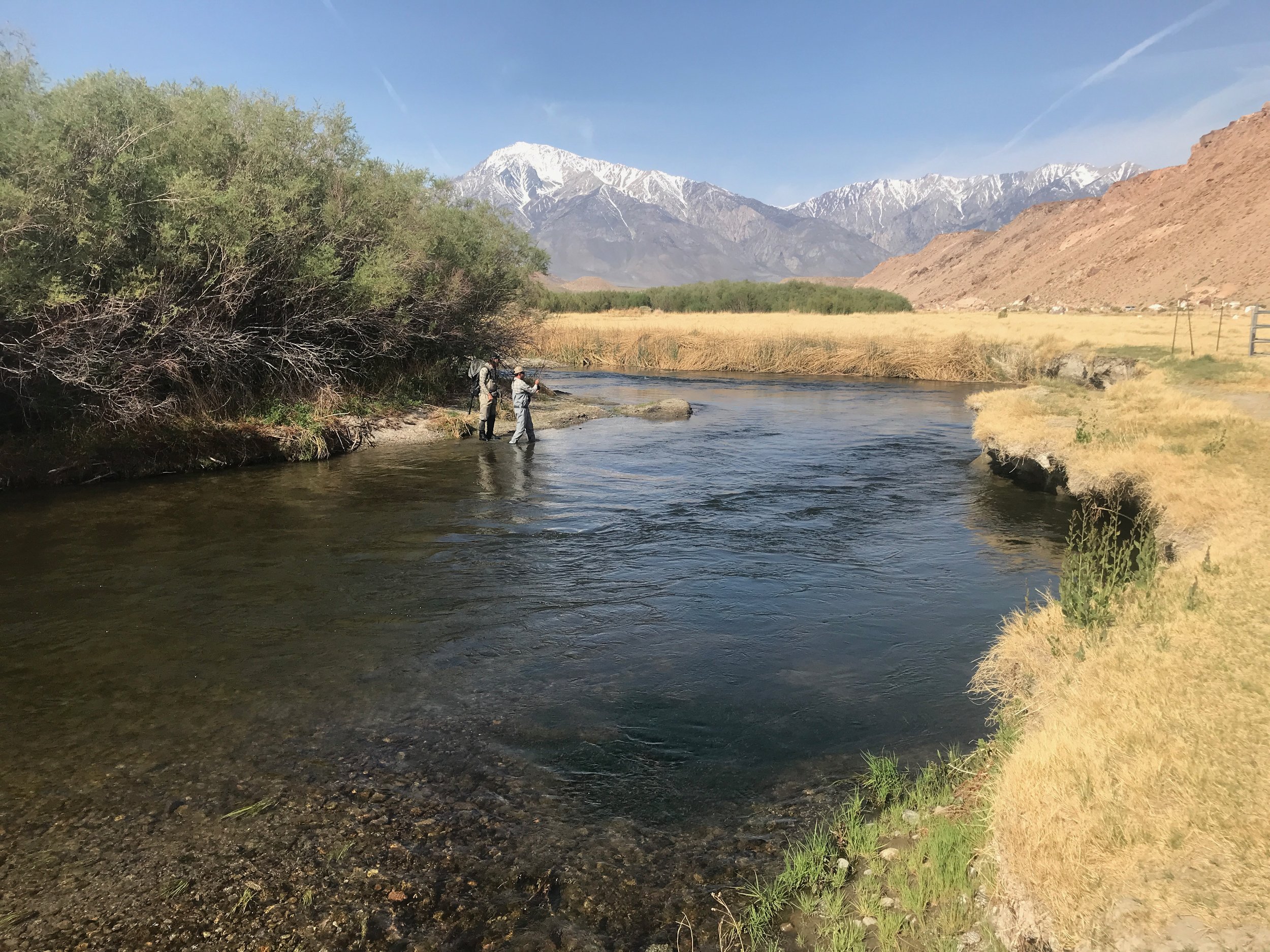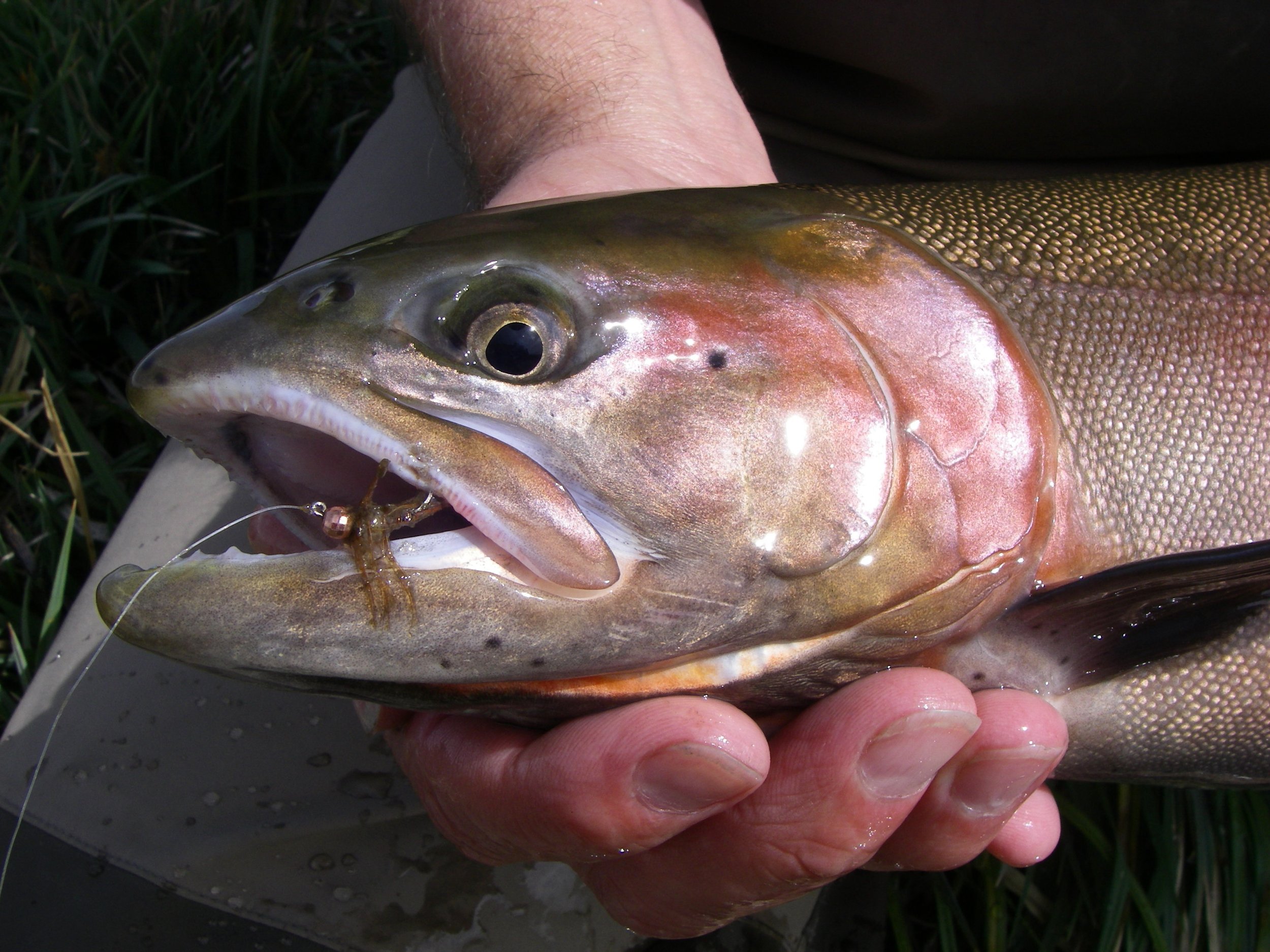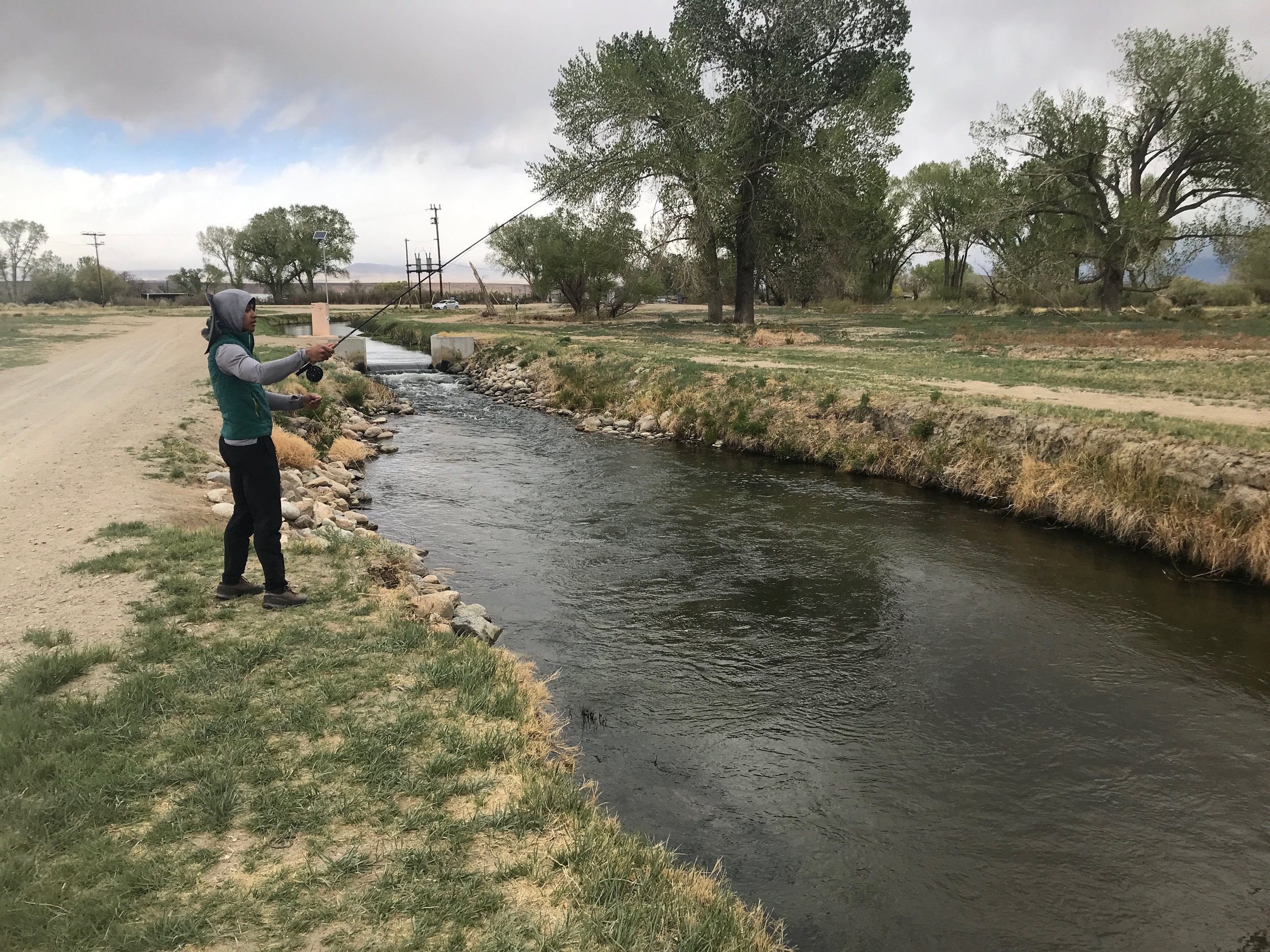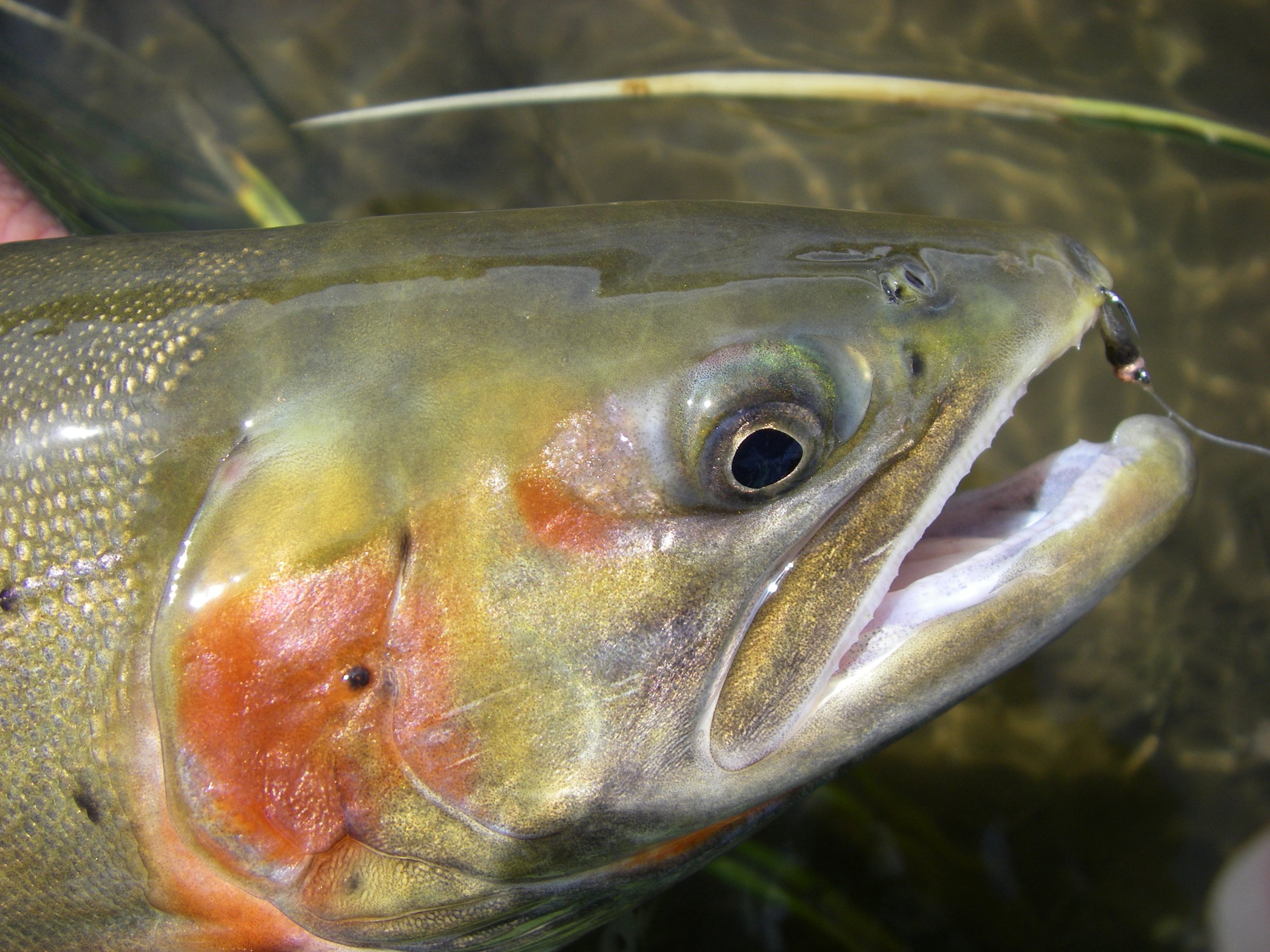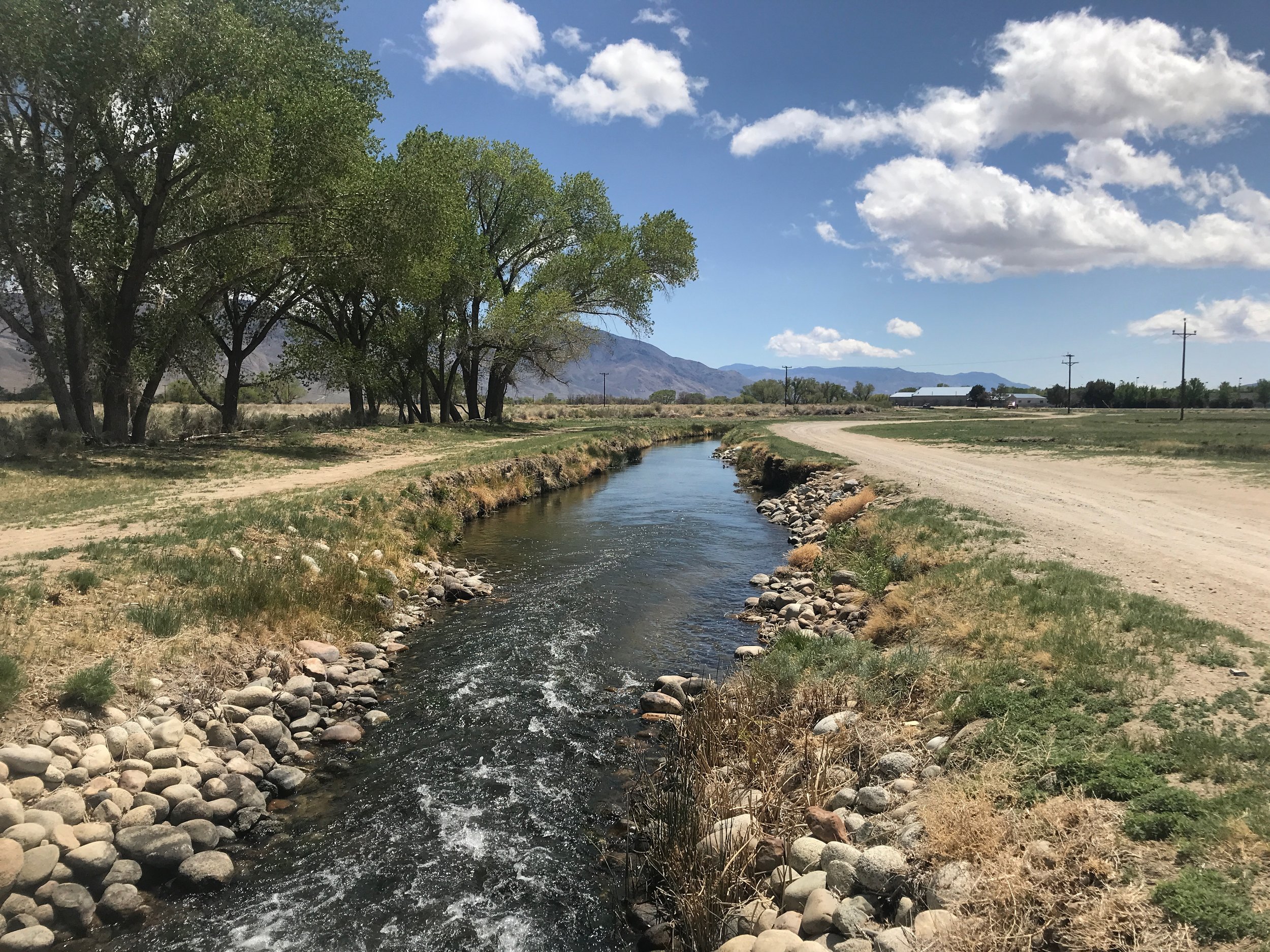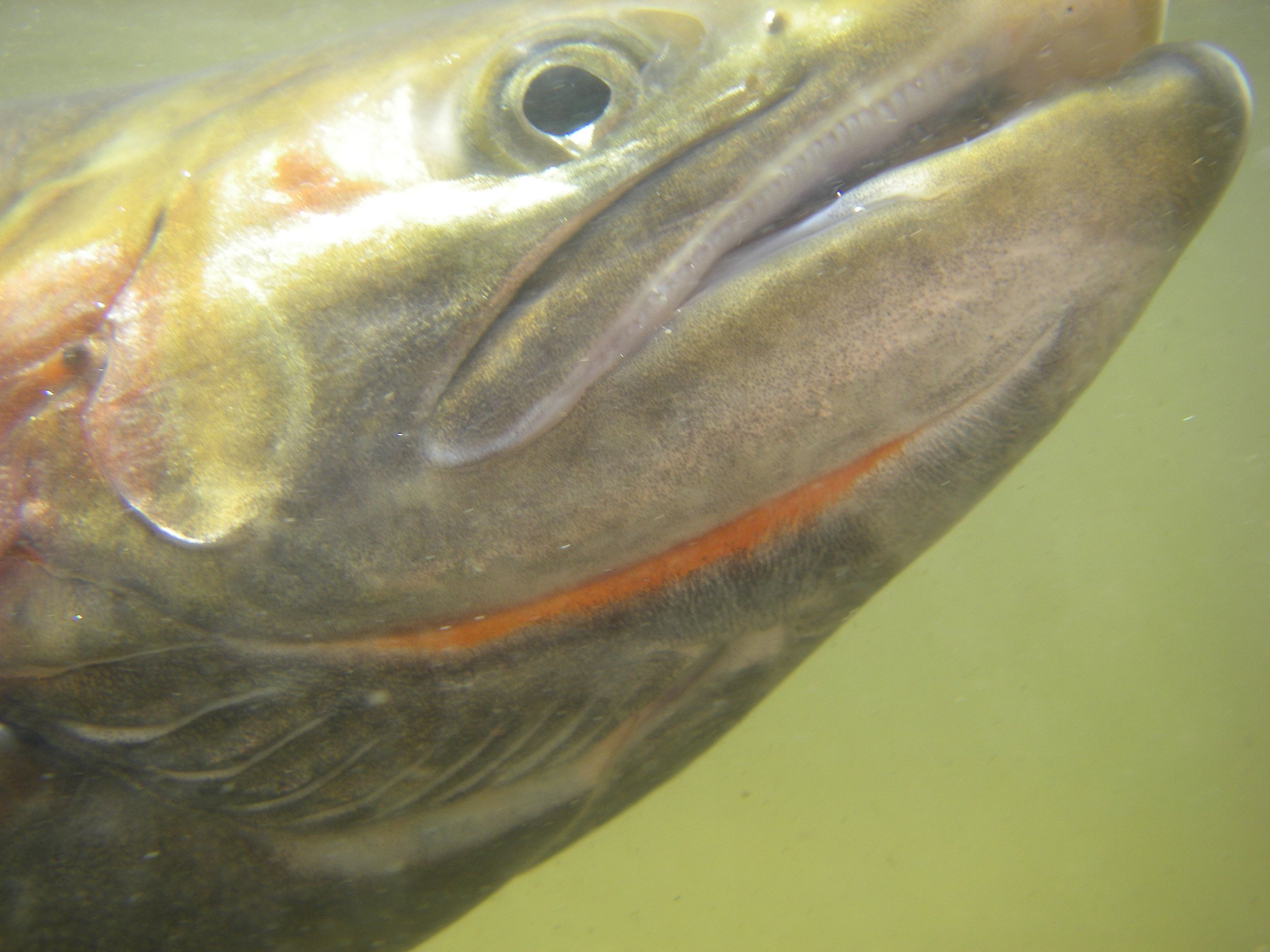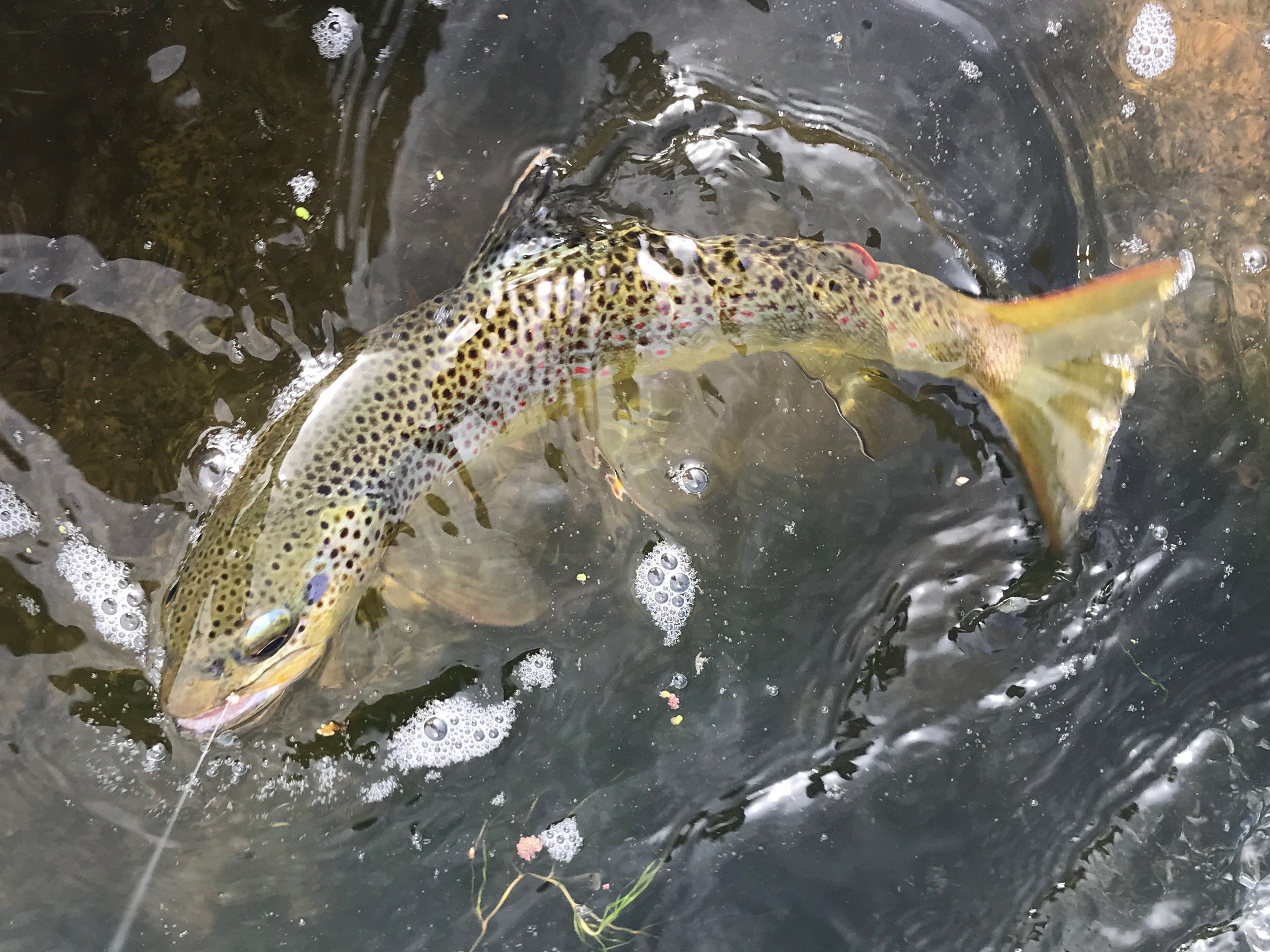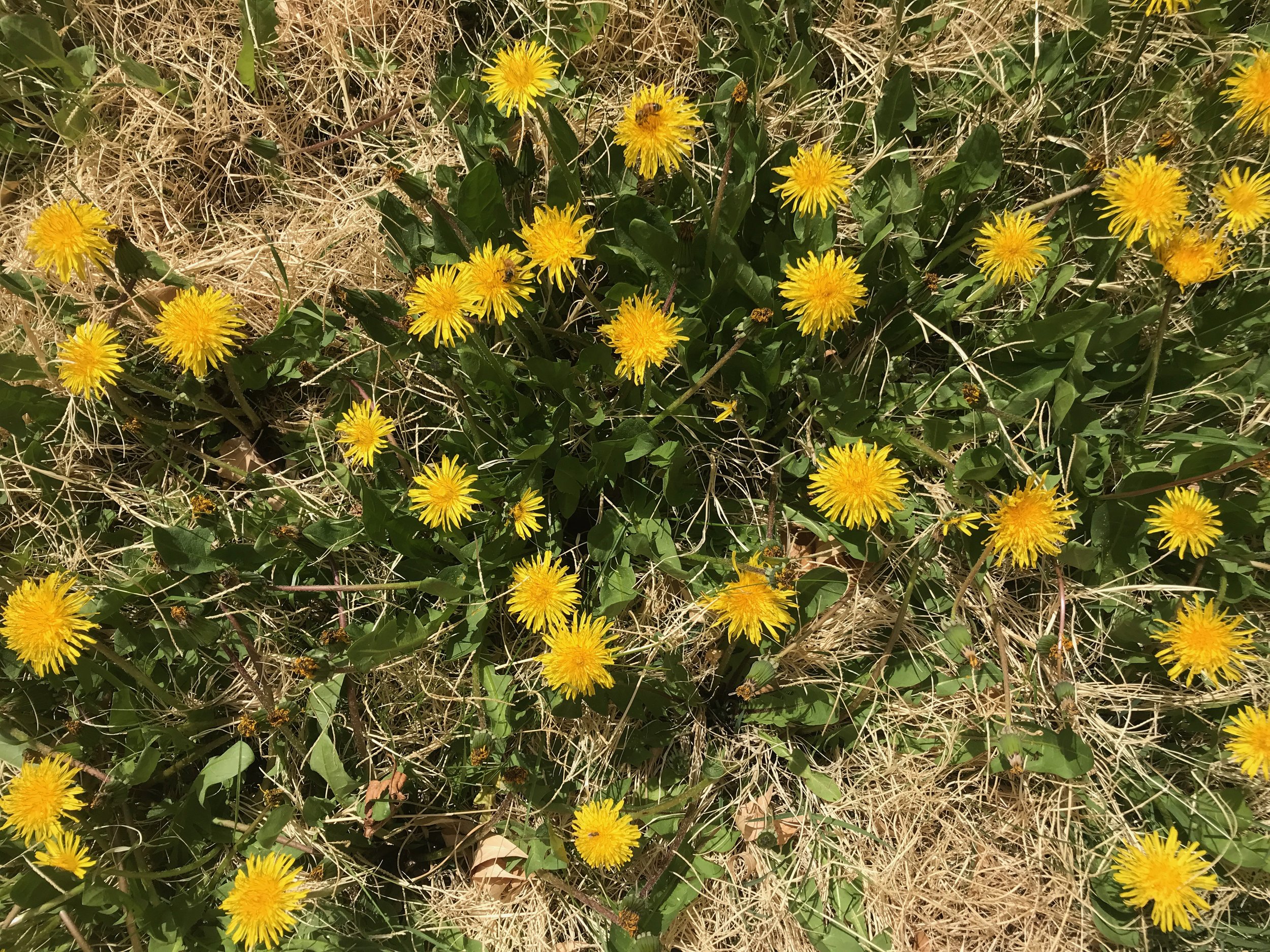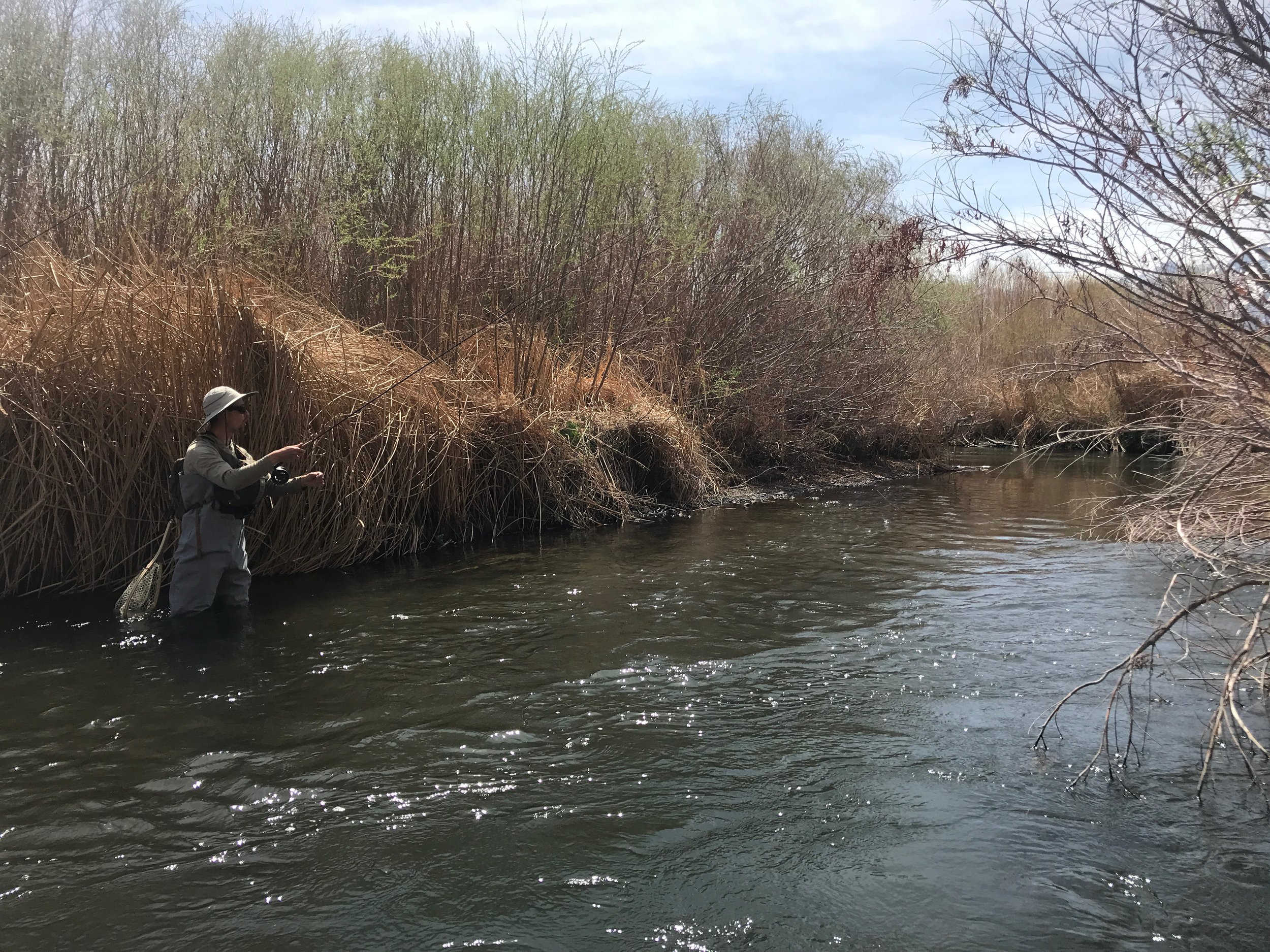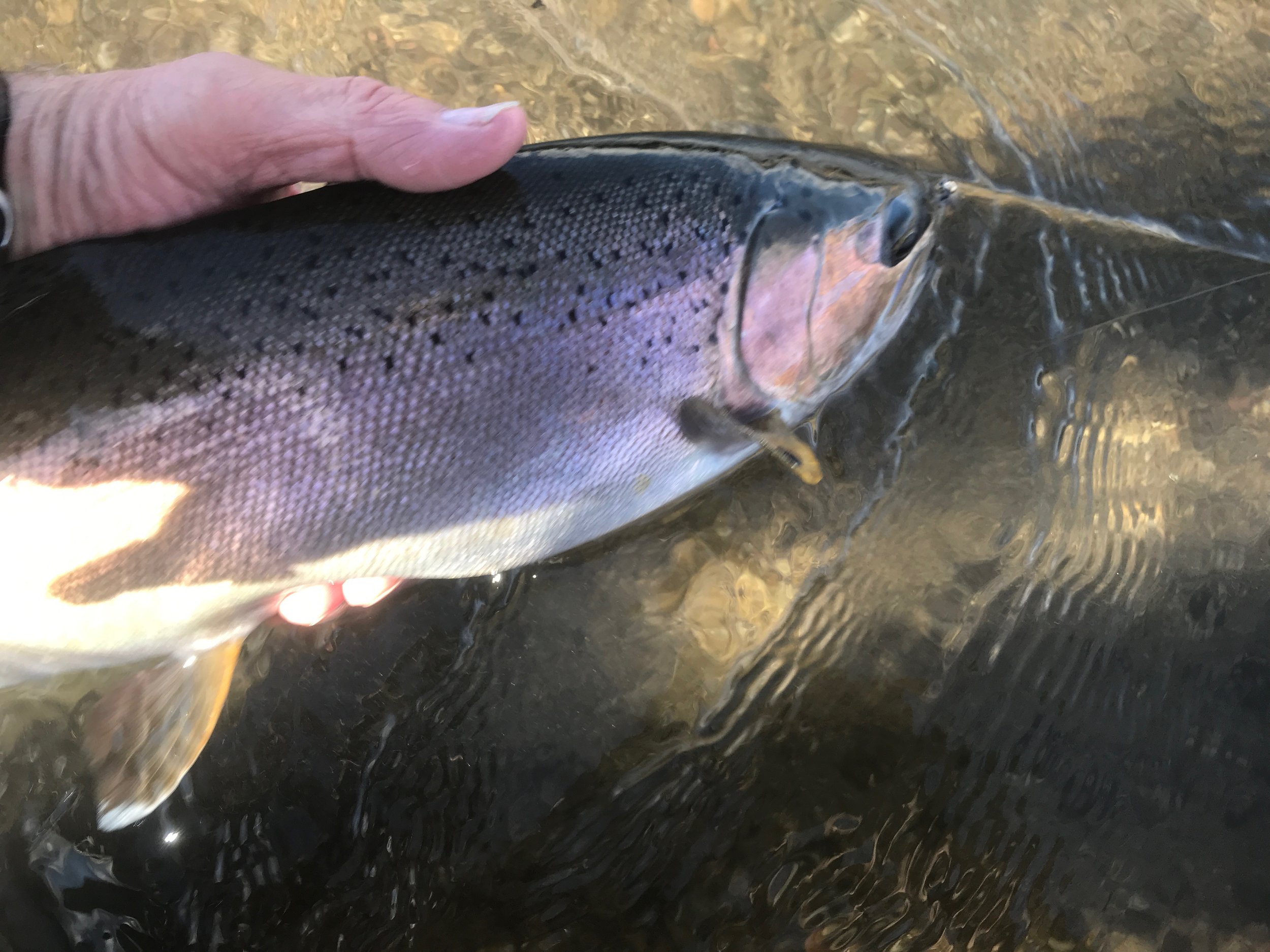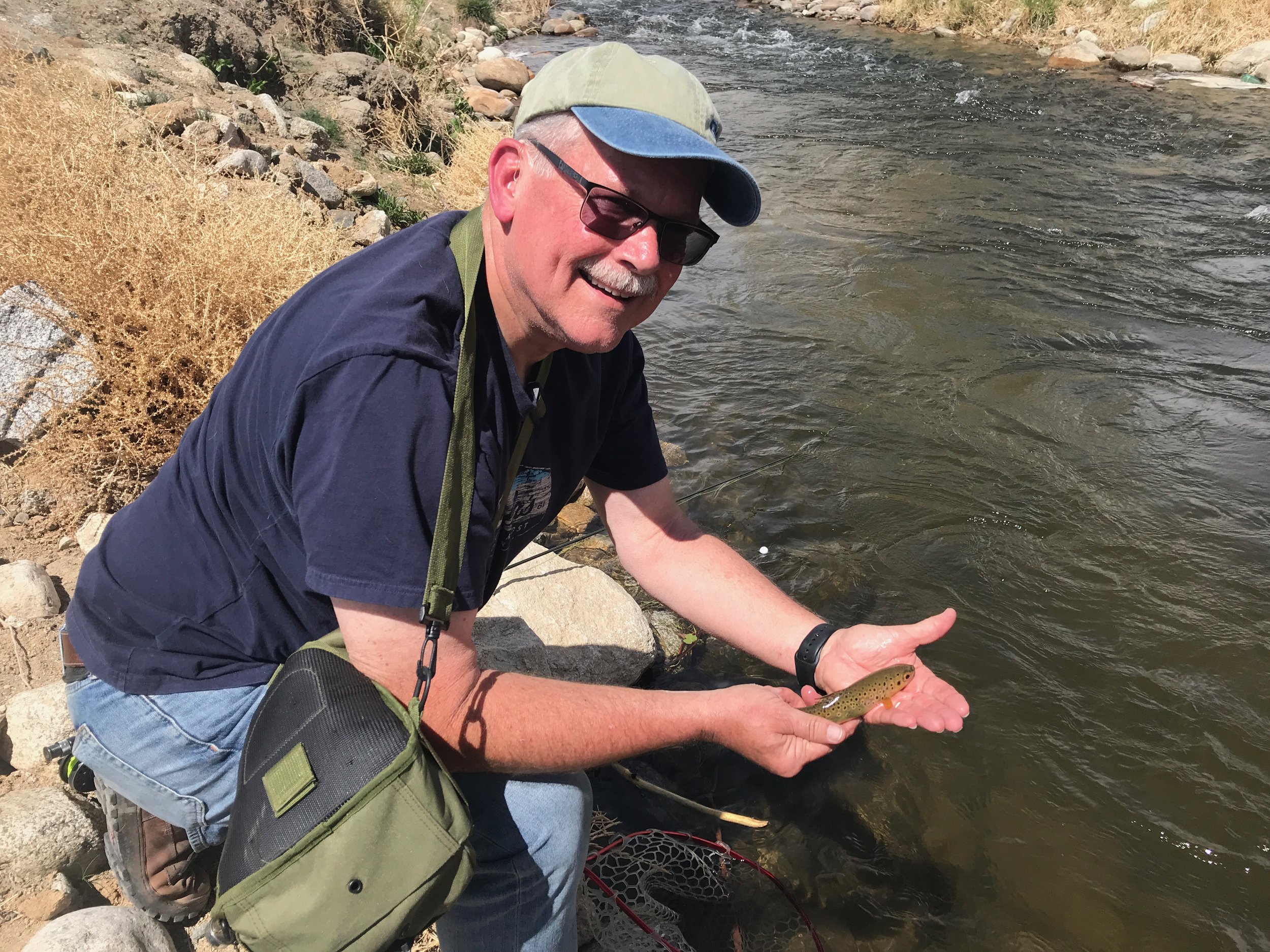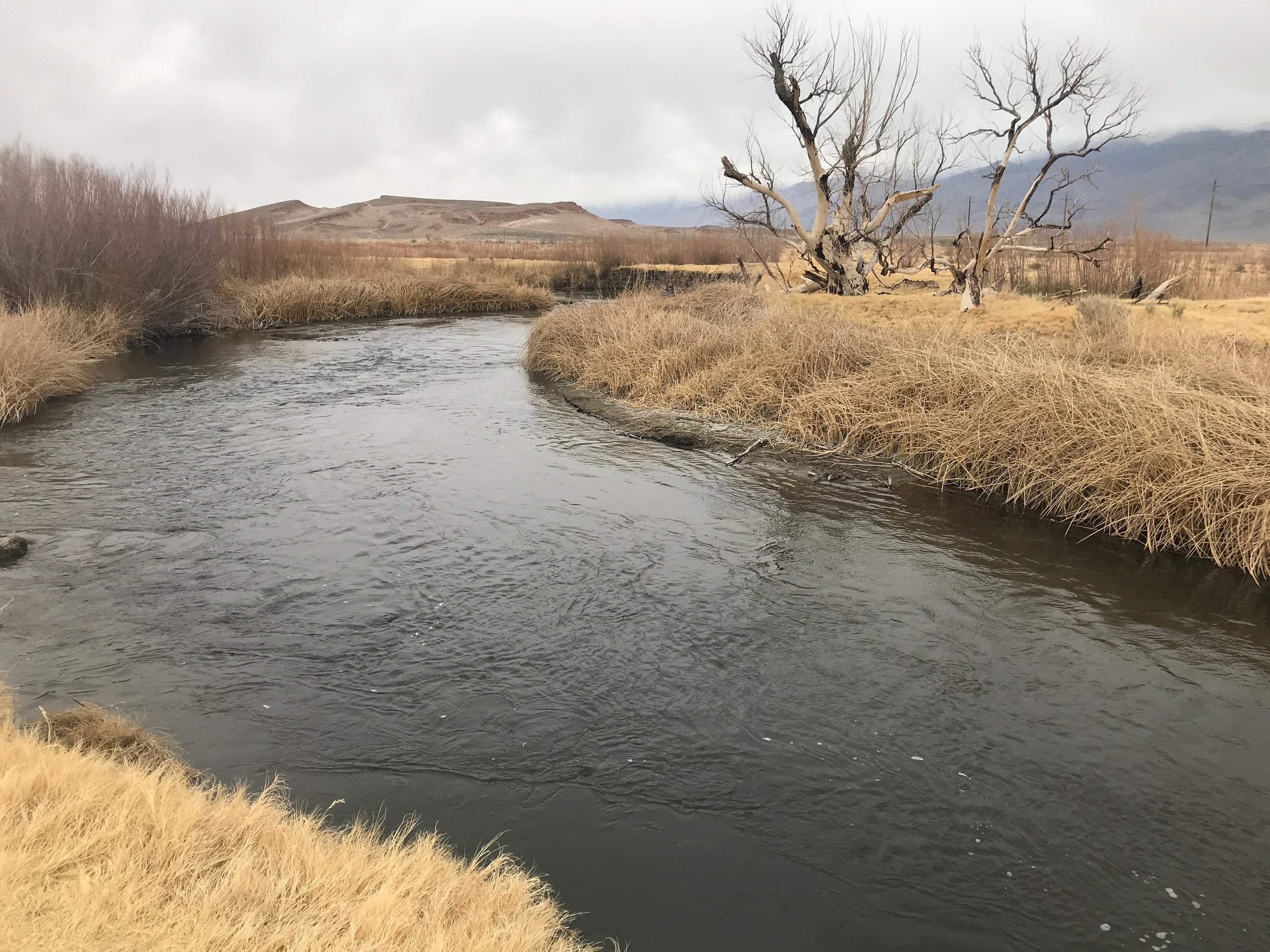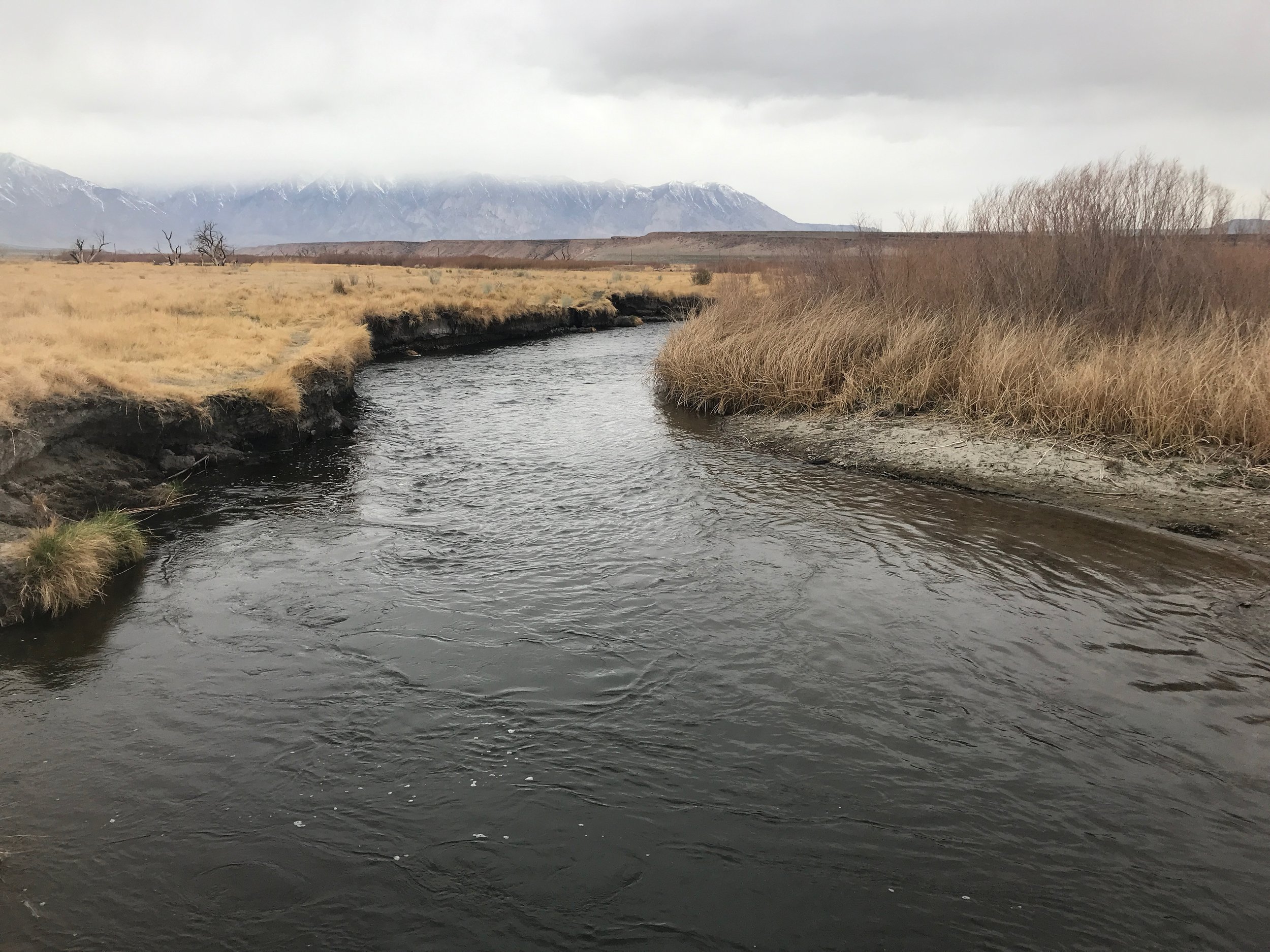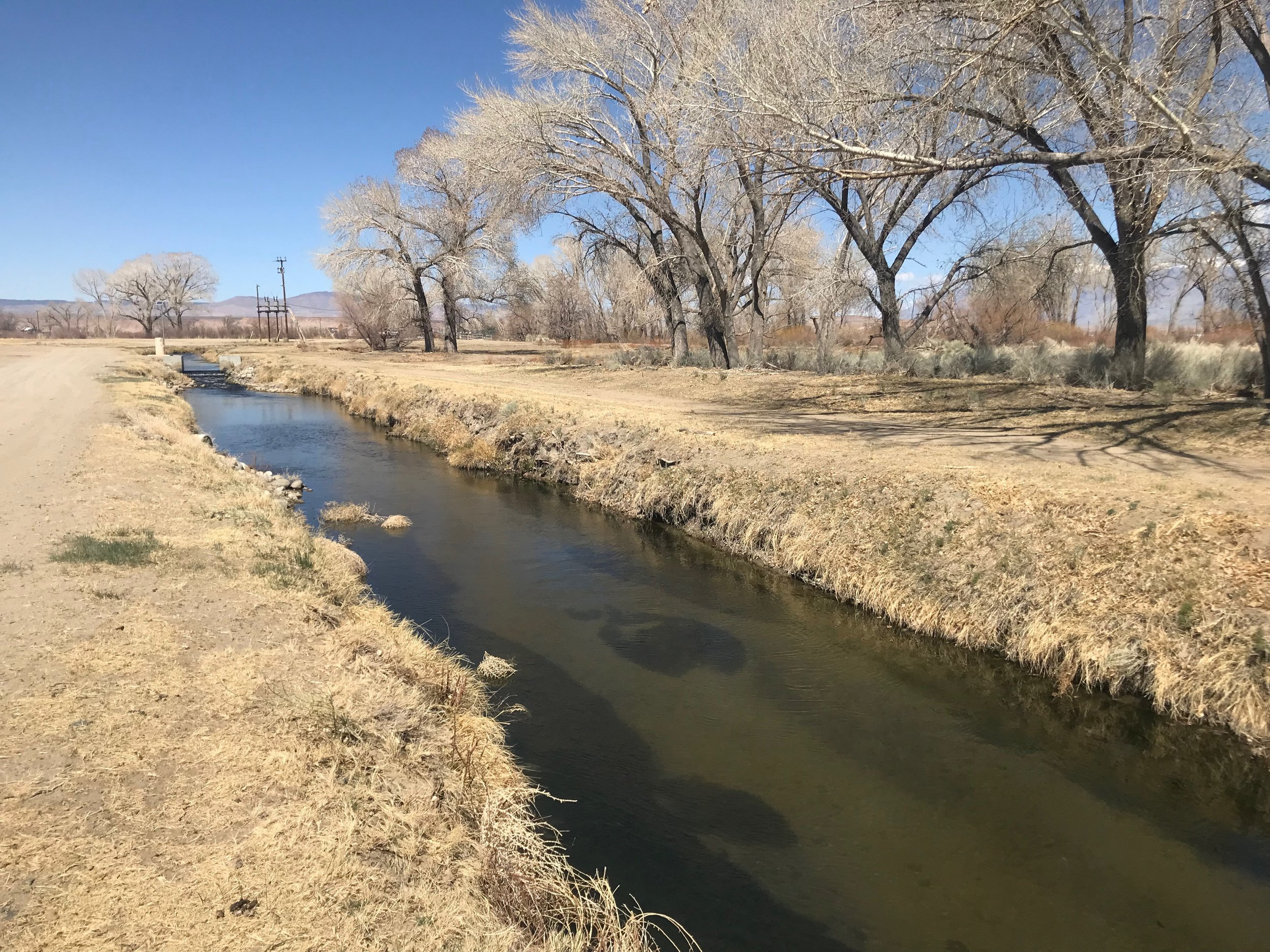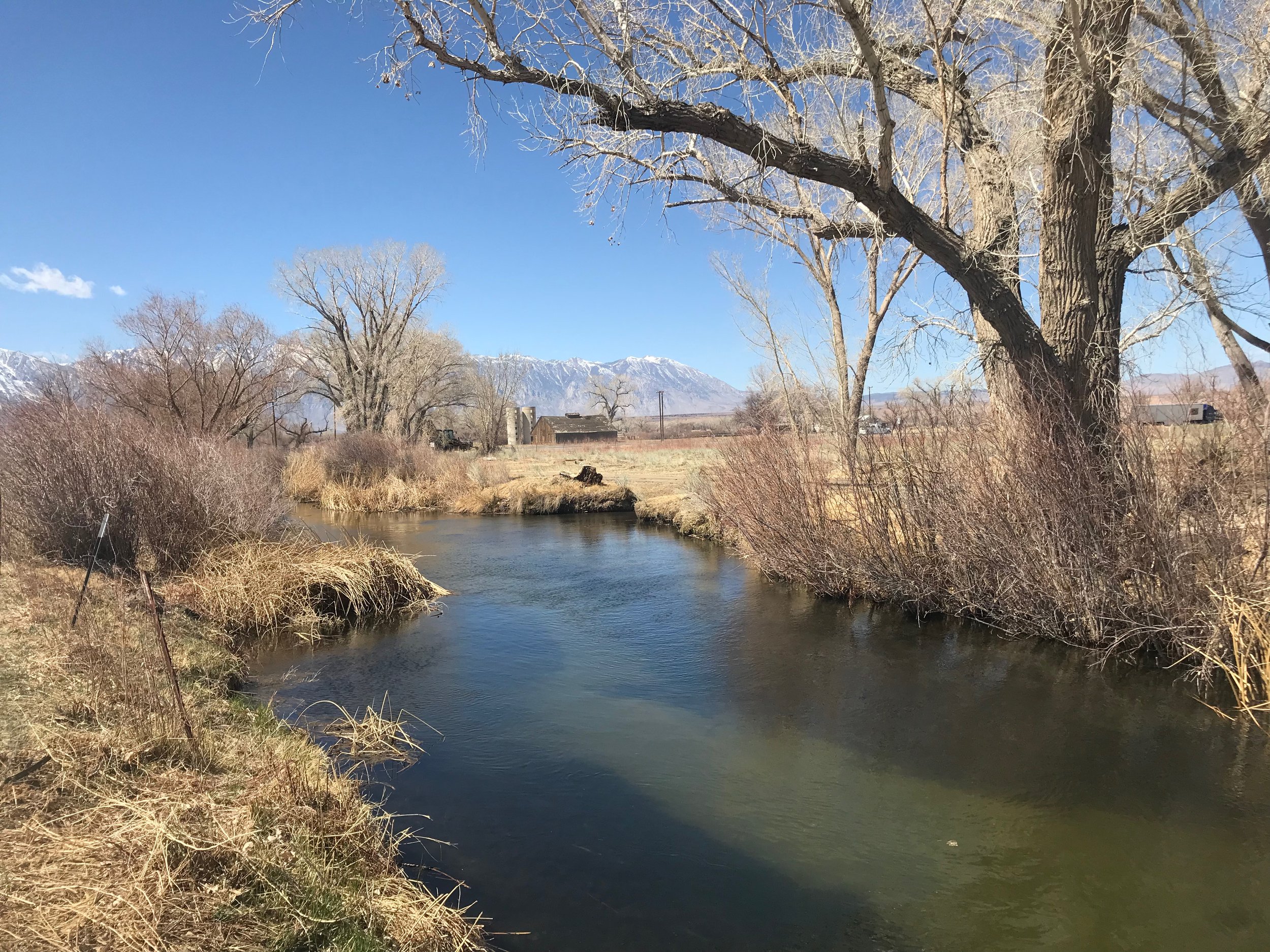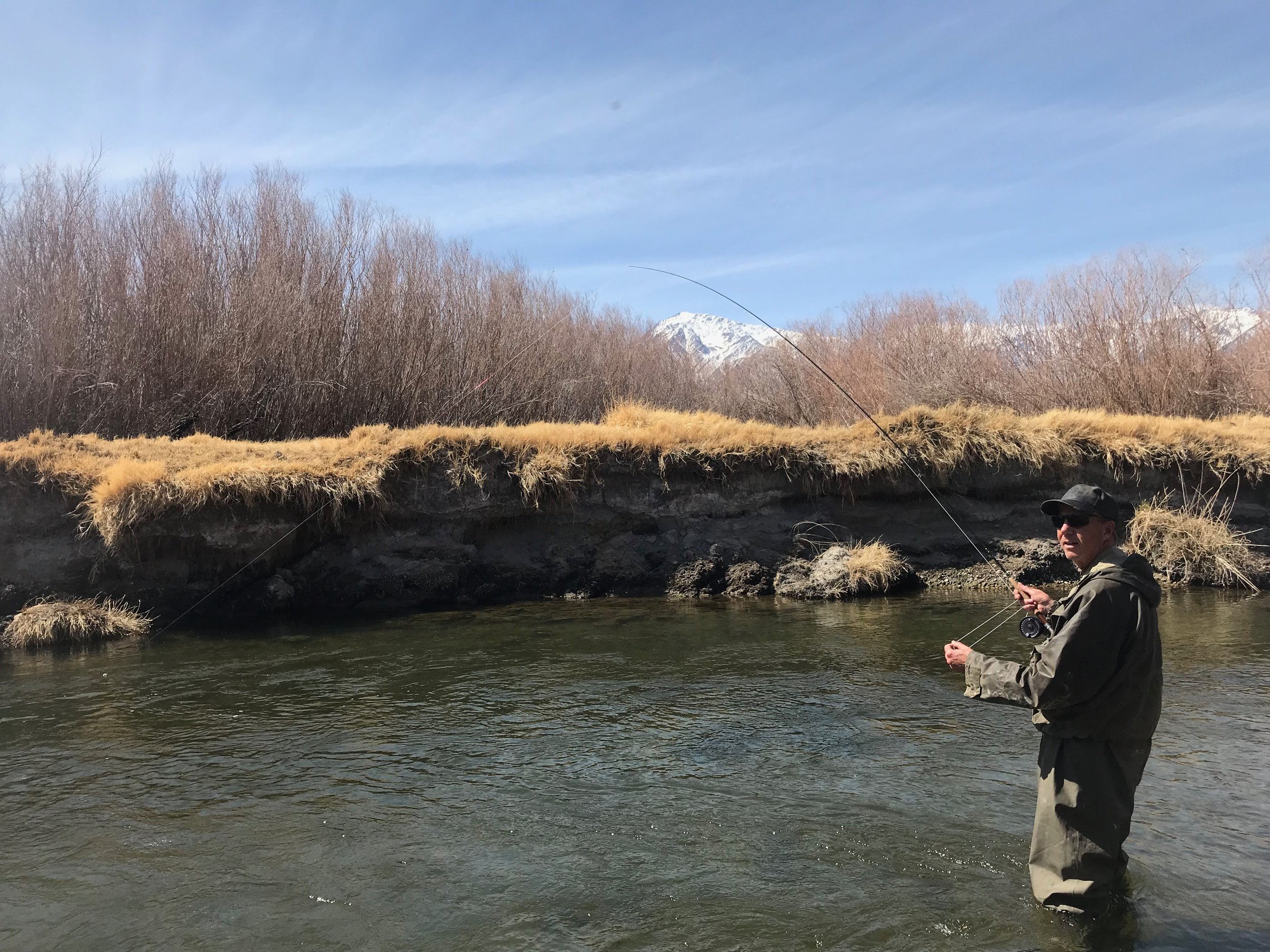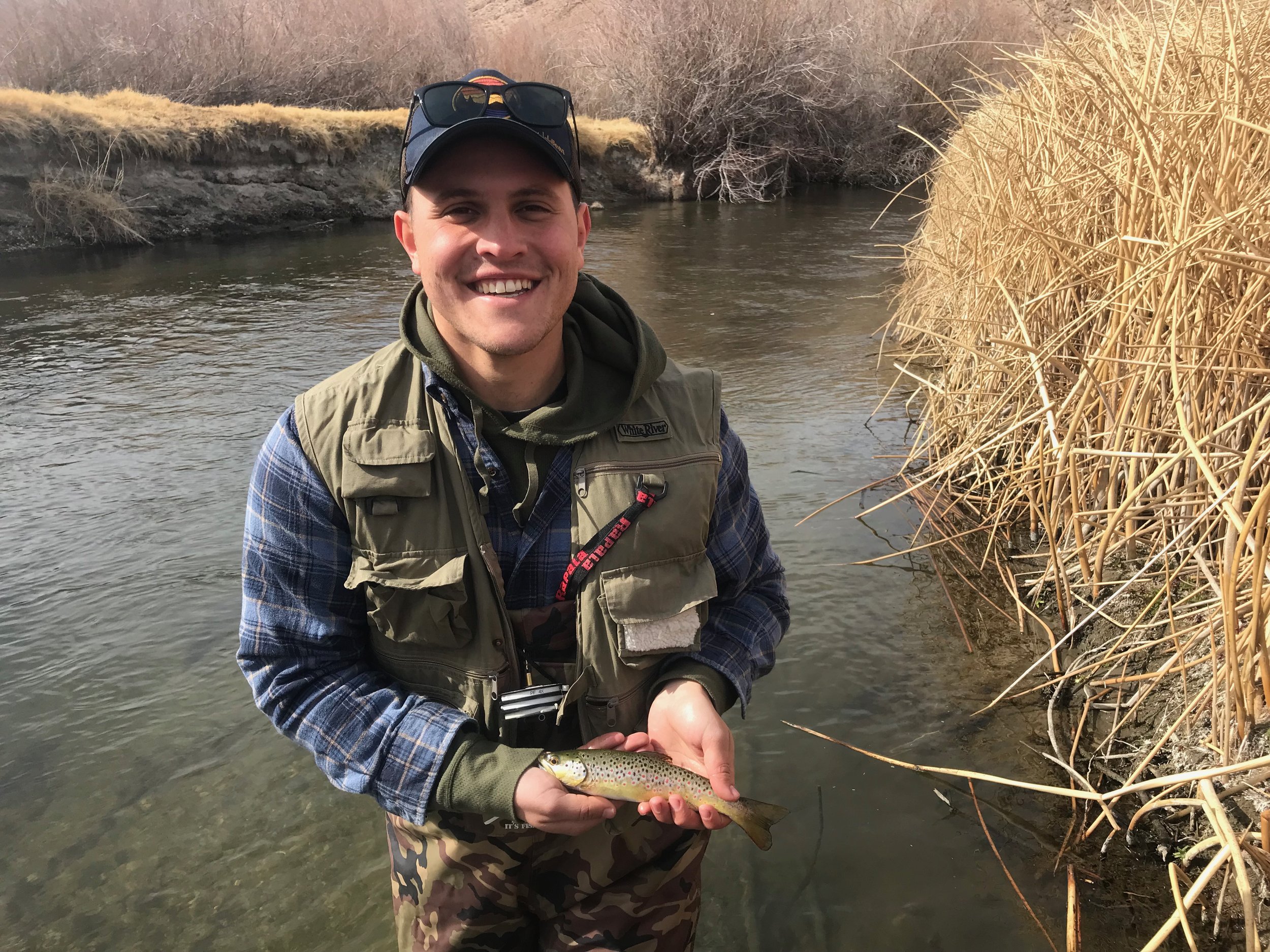We have fresh snow on the White Mountains and the Sierra Mountains and followed up with temperatures in the low 90’s. Welcome to spring in the Eastern Sierra. Wind continues to hamper fly fishers in the Eastern Sierra. When the wind does not blow the fishing has been fun. Cutthroats are in the Crowley Lake tributaries. Remember that the Owens River is the only tributary open to fishing. The other tributaries open up on the Saturday before Memorial Day. Blue wing olive mayflies, crane flies, midges, pale morning dun mayflies, little yellow stone flies and caddis are hatching and the trout are feeding on them.
Jack Basso from San Clemente braves a cold blustery day on the lower Owens River in the wild trout section.
Lower Owens River:
Wild Trout Section:
Flows have stabilized and water is clearing. Nymphing has been the most productive despite seeing hatches of crane flies, mayflies, little yellow stone flies and caddis. Euro nymphing has been more productive than the indicator nymphing. On the Euro rig olive quilldigons, stoner nymphs, and Butano nymphs have been the most productive. Under an indicator a bead head flash back gold ribbed hare’s ear, bead head flash back pheasant tail nymph, and stoner nymph have been producing wild brown trout to 14 inches. The hatches of blue wing olives and pale morning duns has been sporadic with the swallows eating more than the trout. Not all waters are equal when it comes to finding rising trout to the mayflies. Move around to find runs or holes where trout are feeding selectively on these insects.
Father and son, Allen and Jack Basso from San Clemente, nymphing under an indicator with stoner nymphs and bead head flash back pheasant tail nymphs.
Hot Creek:
Interpretive Site:
Spring storms are blowing in and blowing out making it hard to fly fish on Hot Creek. The trout are staying on the bottom feeding on nymphs when the wind blows. Fishing with midge nymphs and pupae in zebra or tiger midge coloration, and bead head flash back pheasant tail nymphs is producing a few fish. This is a good time to work a streamer down in the deep holes and runs dead drifted or stripped. I like fishing with size 6 olive wooly buggers. Balanced perch patterns are working also.
A rare day on the Interpretive site of Hot Creek all to myself.
Hot Creek:
Canyon Section:
This section is a little more forgiving to fly fishers. There is some dry fly activity, but most fly fishers are fishing nymphs. With the low water in the creek fishing a dry and dropper is more effective than using a commercial indicator. Olive quilldigons and bead head flash back pheasant tail nymphs in sizes 18 and 20 are producing wild brown trout and rainbow trout to 18 inches. When the wind does not blow and the hatch is in full swing a parachute blue wing olive in size 20 will fool the surface feeding trout.
The cutthroats are in the upper Owen River system from the Monument to the confluence of Hot Creek.
Upper Owens River:
Above Benton Crossing Bridge:
The cutthroats are in the system and moving upstream. The run started out in the lower section of the upper Owens River in the area of the monument. Now the cutthroats are above Benton Crossing Bridge. The Longyears area of the upper Owens River has a few cutthroats. Fly fishers need to move around and find where there are concentrations of the trophy cutthroats. The cutthroats are taking nymphs and streamers. I’m fishing with stoner nymphs and green/gold Prince nymphs. Mayer’s mini leeches in gray and white are working well. Wooly buggers, hornberg’s, and spruce flies are fooling the trophy trout.
Hooked up on Crowley Lake with a midge system in 12 to 14 feet of water at Sandy Point.
Crowley Lake:
When the wind is not howling Crowley Lake is producing trout for fly fishers nymphing in 12 to 20 feet of water. Sandy Point, Six Bays, and McGee Bay are where the guides are fishing as well as everyone else. Tiger midges, and zebra midges have been the fly of choice. Be sure to move your flies every few minutes. After giving the line a slight pull be ready for a grab as this action attracts the fish to your midges. A few fly fishers have been getting rainbows, browns, cutthroats, perch, and chubs on their midges. The grand, grand slam of fly fishing on Crowley Lake.
Bishop Creek Canal is a great place for beginners to learn to fly fish with little stream side vegetation to inhibit fly casts.
Bishop Creek Canal:
Behind the Ford Dealer:
Wild brown trout are providing the action for fly fishers. This is a great spot for beginners to learn how to fly fish. Fishing a bead head flash back pheasant tail nymph or a bead head flash back gold ribbed hare’s ear under an indicator is producing brown trout to 16 inches. There is no break from the wind when fly fishing the canal. When the wind lies down the fly fishing has been good.


